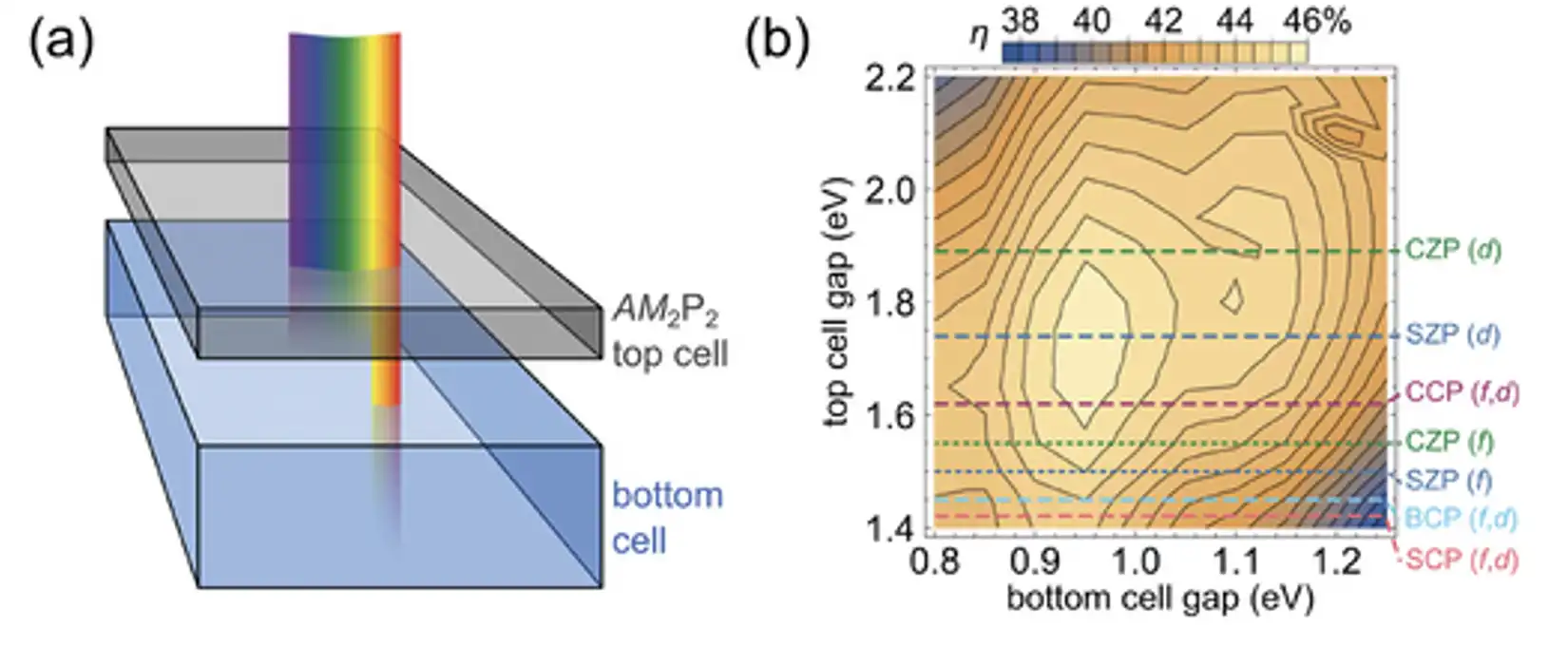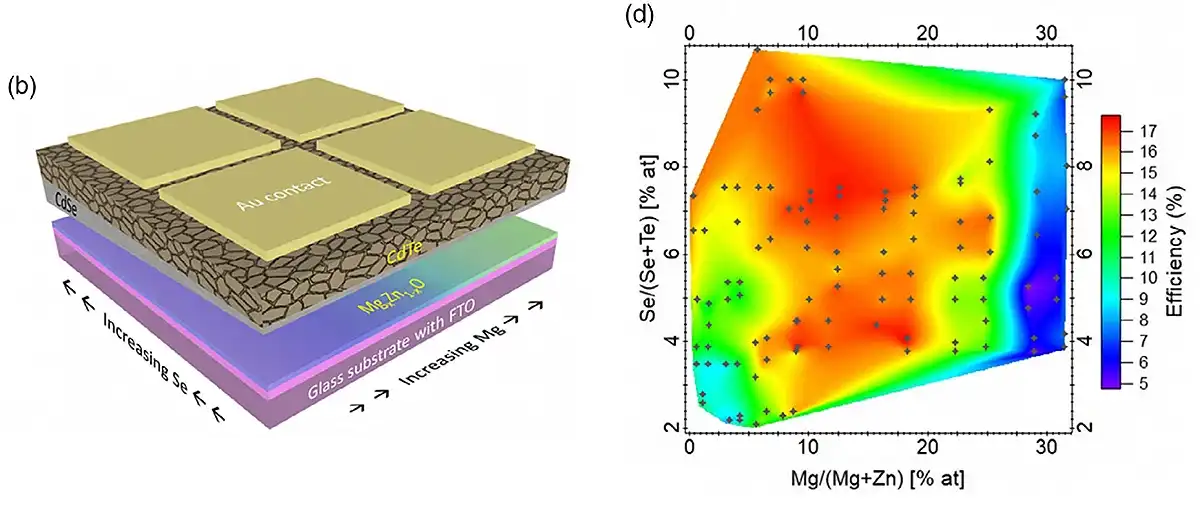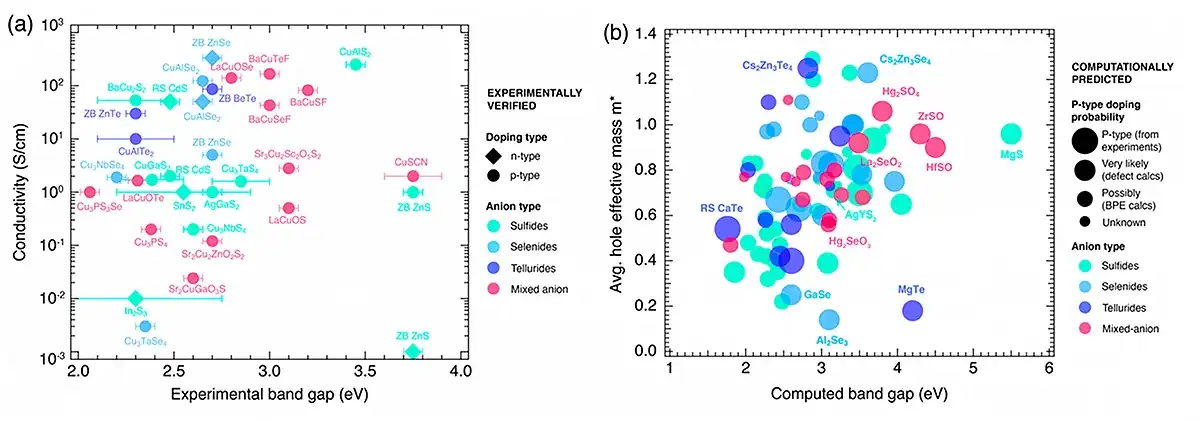Solar-Absorbing Materials
NLR's materials discovery and design researchers work to discover new light-absorbing semiconductors and develop existing absorbers to enable technologies such as thin-film photovoltaic (PV) devices and photoelectrochemical (PEC) cells.
This research area focuses on the initial synthesis of thin-film absorber materials in unconventional chemistries (e.g., complex phosphides, chalcogenides, oxides, and nitrides) and measurement of their properties (e.g., optical absorption, electrical conductivity, work function, and photoexcited carrier lifetime). Such research is the first step toward any material's practical use in PV or PEC devices.
Light Absorber Discovery
As primary single-junction PV absorber technologies (e.g., silicon, copper indium gallium selenide, and cadmium telluride) mature, it becomes increasingly important to consider alternative methods to increase the solar cell conversion efficiency. Because of this, materials discovery research at NLR is increasingly applied toward materials with wider bandgaps, for example in the 1.5–2.2 eV range, for integration with conventional absorbers in next-generation multijunction PV devices.
These wider-gap absorbers are also important as photoelectrodes in PEC cells for H2 generation and CO2 reduction to liquid fuels. Our PEC photoactive materials research focuses on using established semiconductor processing techniques to improve structural quality and increase performance of emerging light absorber materials for PEC cell applications. We also discover brand new materials for these (photo)electrochemical applications in collaboration with theoretical scientists, mainly focused on the photocathodes for carbon dioxide reduction, as well as complementary photoanodes.
For more information, see:
Low-Temperature Synthesis of Stable CaZn2P2 Zintl Phosphide Thin Films as Candidate Top Absorbers, Advanced Energy Materials (2024)
Epitaxial ZnGeP2 Thin Films on Si and GaP by Reactive Combinatorial Sputtering in Phosphine, Crystal Growth & Design (2022)
Zinc Titanium Nitride Semiconductor Toward Durable Photoelectrochemical Applications, Journal of the American Chemical Society (2022).

Photovoltaic Devices
The ultimate goal of PV materials research is the practical application of new materials in useful devices such as solar cells. There is a myriad of interesting scientific challenges that arise from materials interactions, such as those associated with integrating multiple materials with optimal properties into a single device. These include measurements of materials band offsets.
For more information, see:
Codesigning Alloy Compositions of CdSeyTe1-y Absorbers and MgxZn1-xO Contacts to Increase Solar Cell Efficiency, Solar RRL (2022)
Review of ZnSnN2 Semiconductor Material, Journal of Physics (2020)
Research Update: Emerging Chalcostibite Absorbers for Thin-Film Solar Cells, APL Materials (2018).

Transparent Conductors
Wide-bandgap semiconductors are essential for electronic devices and energy applications because of their high optical transparency, controllable carrier concentration, and tunable electrical conductivity. Such transparent conductors, most commonly oxides, are used as contacts in thin-film PV and PEC cells.
For more information, see:
Nitrogen Stabilizes the Wurtzite Polymorph in ZnSe1− xTex Thin Films, Journal of Materials Chemistry C (2022)
Prediction and Realisation of High Mobility and Degenerate P-Type Conductivity in CaCuP Thin Films, Chemical Science (2022)
MgxZn1− xO Contact to CuGa3Se5 Absorber for Photovoltaic and Photoelectrochemical Devices, Journal of Physics: Energy (2021)
Wide Band Gap Chalcogenide Semiconductors, Chemical Reviews (2020).

Projects
The work on new light absorbing materials is funded by the U.S. Department of Energy (DOE).
Funded by the DOE Office of Science, Basic Energy Sciences, this project, in collaboration with Dartmouth College, uses guidance from high-throughput, high-fidelity theoretical calculations to study new solar absorbers predicted to have benign defects leading to long carrier lifetimes. NLR is preparing these materials, often for the first time as thin films, to validate and test predictions and thus demonstrate their promise as next-generation thin film solar absorbers.
The Liquid Sunlight Alliance (LiSA) aims to design materials that can convert sunlight into chemical energy using only components of air: water and carbon dioxide—inspired by photosynthesis in plants. LiSA is one of two Fuels from Sunlight Energy Innovation Hubs funded by the DOE Office of Science, Basic Energy Sciences.
This project aimed to demonstrate potentially disruptive, novel PV absorbers by developing proof-of-concept PV device prototypes composed of defect-tolerant inorganic thin film oxide/nitride absorbers.
This project aimed to demonstrate the rapid development approach to thin-film solar cell development, using the example of devices made of abundant materials such as CuSbS2 and Cu2SnS3.
The objectives of this project were to identify earth-abundant, thermodynamically stable, and nonreactive Cu-M-N materials; determine their exact chemical stoichiometry and crystallographic structure; and study their physical properties related to photovoltaic applications.
The aim of this project was to develop a novel (Zn,Mg)Cu oxysulfide solar absorber material with the potential to reach and exceed 20% energy conversion efficiency by substantially modifying the Cu2O base material by alloying with sulfur, zinc, and magnesium.
Research Collaborators
Stephan Lany – Theoretical/computational
Chris Muzzillo – Chalcogenide and oxide thin film growth
Matt Hautzinger – Phosphide nanocrystal synthesis
Jeff Neaton – Theory (University of California Berkeley / Lawrence Berkeley National Laboratory)
Joel Haber – Carbon dioxide reduction electrochemistry (Caltech)
Geoffroy Hautier – Prediction of new solar absorbers (Dartmouth College)
Contacts
Share
Last Updated Dec. 10, 2025
